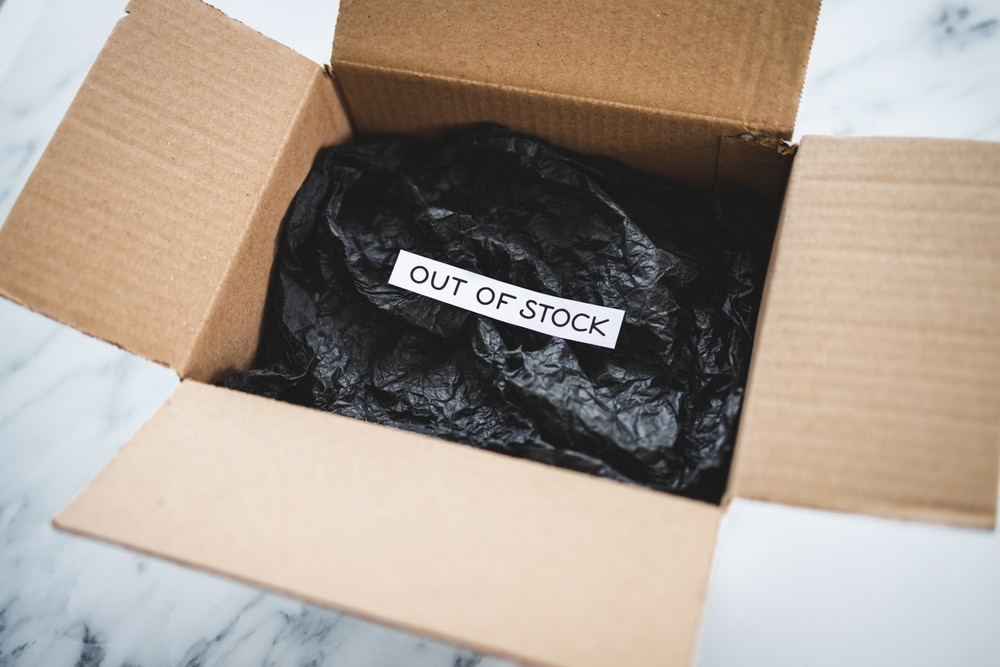(OPINION) Supply chain problems were supposed to be a thing of the past, but instead our supply chains just keep getting hit by issue after issue. Have you noticed that it has become really difficult to acquire parts and get things repaired?
It isn’t just your imagination. And have you noticed that store shelves seem rather sparse just about wherever you go shopping? During my latest visit to the local grocery store, I was stunned to see how thin stock levels had become.
I assumed that it was because I had arrived at a bad time and that they were about to be restocked. But then I started looking into this, and I discovered that major supply chain issues are starting to develop all over the country.
According to a survey that was recently conducted, a whopping 82 percent of those that visit brick and mortar stores have had problems with things being out of stock this year. That figure is up 11 percent from the same time last year…
More than four-fifths (82%) of bricks and mortar shoppers say they’ve experienced items being ‘out of stock’ this year, according to new research.
The data – from software provider Retail Insight – finds this headline figure is up 11 percentage points year-on-year, and says supply chain disruptions causing it is now seriously threatening customer loyalty.
The findings are based on a survey of 1,000 people and found shoppers believe product availability has become increasingly a problem since the onset of the pandemic – as reported by 71% of respondents. An additional three-quarters (75%) said product availability has worsened since the start of the cost of living crisis.
Of course, it isn’t just brick-and-mortar stores that are having trouble keeping things in stock. Here is more from that same survey… This was also a story amongst online shoppers, where incidents of ‘out of stock’ items have increased by six percentage points year-on-year, with 60% of customers now seeing out-of-stock items online.
At a time when things are supposed to be getting back to “normal”, these numbers are going up. That isn’t good. So what in the world is going on? Well, the truth is that it isn’t just one thing.
In a video that he just posted, Steve Poplar explains that our supply chains are literally being hit from countless different directions right now…
Sadly, some of the wounds to our supply chains are self-inflicted. For example, the Biden administration has decided to impose new tariffs that “could raise the prices of canned food by up to 30%”…
The Biden administration on Thursday announced new tariffs on can-making metal imported from China, Germany and Canada, a move that food companies say could lead to higher prices for some canned foods.
Chinese products would be subject to the highest tariffs of the three countries—a levy of 122.52% of their import value. That rate partly reflects Chinese companies’ refusal to cooperate with the investigation to prove their independence from the Chinese Communist Party, an administration official said.
The Consumer Brands Association, a trade group representing companies such as Campbell Soup and Fresh Del Monte Produce, estimated new tariffs, if applied aggressively, could raise the prices of canned food by up to 30%. Thanks Joe.
Now a can of soup that currently costs us about two dollars will soon be close to three dollars when you add on sales tax.
On top of everything else, the seemingly endless drought in the middle of the country is likely to mean that corn production and soy production will both be well below expectations this year.
This week, a massive heat dome will drive the heat index above 110 degrees in our agricultural heartland, and that is not good news at all…
A heat dome will consume the Plains and Mississippi Valley into the South this week with oppressive and dangerous conditions, the National Weather Service reported early Monday.
“…The more widespread weather hazard extending through midweek involves searing temperatures impacting a majority of the central U.S. and Gulf Coast,” the NWS said.
“Dangerous heat underneath an extremely potent upper-level ridge centered over the Middle Mississippi Valley is forecast to stretch from parts of the Upper Midwest to the Gulf Coast. Highs into the upper-90s and triple digits will be easy to come by over the next several days, with heat indices into the 110s when taking into account the humidity.”
Unfortunately, the entire globe has been dealing with very unusual weather patterns this summer, and global food prices are beginning to surge.
Needless to say, this is hitting those living in extreme poverty the hardest…
Prices for rice grown in Kenya soared a while ago because of higher fertilizer prices and a yearslong drought in the Horn of Africa that has reduced production. Cheap rice imported from India had filled the gap, feeding many of the hundreds of thousands of residents in Nairobi’s Kibera slum who survive on less than $2 a day.
But that is changing. The price of a 25-kilogram (55-pound) bag of rice has risen by a fifth since June. Wholesalers are yet to receive new stocks since India, the world’s largest exporter of rice by far, said last month that it would ban some rice shipments. (READ MORE)








